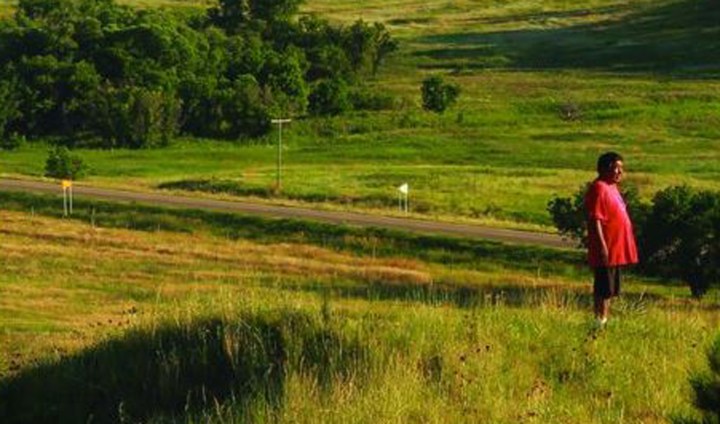Maverick Life
Cape Town Recovery Film Festival: Race, drink and politics – a dangerous mix

‘Sober Indian | Dangerous Indian’ is the politically incorrect story of the unofficial ‘dop’ system on tribal reservations in the USA. Some activists say alcohol abuse keeps Native American people downtrodden, but there are also moves to legalise drinking on the reservations. MARELISE VAN DER MERWE reviews a tricky documentary.
“A story of empowerment through sobriety”, is the tagline on the website of Sober Indian | Dangerous Indian. It’s not entirely accurate. The film is more specifically a tale of disempowerment through alcoholism, which is, if you’ll pardon the expression, extremely sobering.
The film follows four alcoholics who leave their reservation, Pine Ridge, to go drinking in the neighbouring town of Whiteclay.
Whiteclay is not your average one-horse town. It’s more like the town the horse missed because it was too small. Whiteclay, Nebraska, population 12, has a grand total of four convenience stores. How these stores stay open might initially appear to be a mystery, since said stores would have to share three customers each; however, it becomes a little clearer when you look at the booze statistics: these four stores alone sell approximately four million cans of beer per year.
The customers? Alcoholics from the reservation.
Sober Indian | Dangerous Indian is set in the weeks leading up to the Oglala Sioux Tribe’s vote to repeal its ban on alcohol on 13 August 2013. Up to that point, alcohol was banned in the reservation by order of the tribal elders. Not that that was any more effective than the Prohibition against Al Capone: those who wanted to drink simply wandered into Whiteclay. And the Whiteclay store owners laughed all the way to the bank. The streets of Whiteclay are 300-odd metres from the homes of the alcoholics in Pine Ridge, and access to alcohol was laughably easy to those who wanted it.
The implications are horrific and, sadly, all too predictable. Drinking makes people violent. And addiction always comes first. Beer is gold but money is scarce. Poverty is rife on the reservation. The addicts cash in their grants for beer before the first child has been fed. They sell their bodies. One, through tears, describes giving a rich, fat man oral sex in his car and being unceremoniously thrown out with five dollars. Another describes multiple failed suicide attempts before saying, through a hollow laugh, that he eventually opted for drinking because it’s the one type of dying he seems to get right. One cries and cries as he promises never to hit his wife again. This time he won’t do it, he swears. If she’ll only let him see the kids. He misses them.
For filmmaker John Maisch, as well the activists appearing in the film, the question of sobriety and empowerment go hand in hand. The film labours the idea that colonialism drives drunkenness and that alcoholism came in with the white man’s devilry. It’s subtle like a hurricane, but hey. Describing what he knew of the Native Americans as a youngster early in the film, Maisch explains that it was steeped in stereotype and neither good nor bad: “They were honourable people,” he says, “but they drank a lot.” This two-dimensional view expanded a little when Maisch ventured into Whiteclay and Pine Ridge to actually get to know some of these “honourable people” who “drank a lot” and found that, in fact, not all of them did: one of his notable friendships was formed with activist Frank LaMere, who played a significant role in the film.
LaMere, one gathers, was a driving force behind the idea of sobriety as empowerment. LaMere – who appears frequently in the film – does not drink at all and works tirelessly to banish alcohol abuse on the reservation. He is also impressively vocal about the need for Native Americans to stand up and demand equality – but to do so from a place of strength. His views can be summed up best on the film’s website when it says, “No matter how real historical trauma is, we cannot use it to excuse the domestic violence and sexual abuse that is being fuelled by overconsumption of alcohol on tribal reservations like Pine Ridge today. If we’re going to have an honest conversation about alcohol abuse on some of our country’s tribal reservations, then we have to acknowledge the role forced relocation and forced assimilation has played in perpetuating this environment.”
It is LaMere’s belief that the problem is part of deliberate efforts to control Native Americans by encouraging them to over-consume alcohol over the past four centuries. It’s a weighty statement. But a less debatable sentiment comes in the words of fellow activist Debra White Plume, who says simply: “A sober Indian is a dangerous Indian.” The discussion, at this point in the film, is around the issue of empowerment, and taking responsibility for one’s life, as one does when getting sober. If every alcoholic on the reservation were doing that, repression would be difficult indeed. It’s a hard point to argue.
“They would be asking: ‘Why doesn’t my child have what your child has? Why do you have everything and I have nothing?’” LaMere asks in the film, and one has to concede he has a point. It’s bound to strike a raw nerve in South Africa, too, where the dop system reigned supreme for so long and covered so many ills: keep people addicted and they won’t protest that they are downtrodden.
Sober Indian | Dangerous Indian is an uncomfortable film. It’s also important. If there’s a point of criticism, it’s that it tries too hard to find neat answers that support its theory. The film attempts to tie in a happy ending when its subjects sober up, but unfortunately no amount of editing obscures the reality: for the four men featured, that’s not the case. At least one of the men shows no signs of getting better permanently; another is severely traumatised and a third is in jail. Their situation is going to take more than empowerment. These men carry the scars of incalculable suffering. The day they get sober will only be the start. DM
See Sober Indian | Dangerous Indian at the Cape Town Recovery Film Festival.















 Become an Insider
Become an Insider